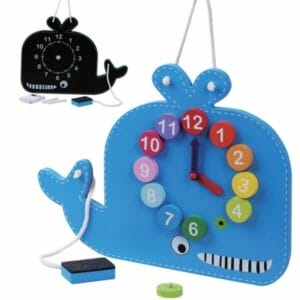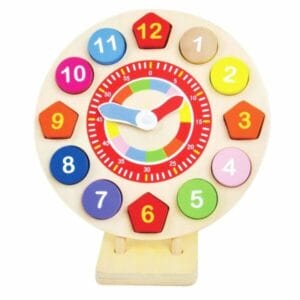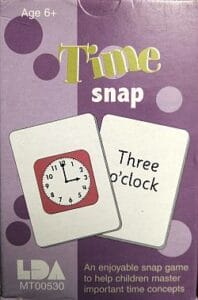Tips for Helping Your Child Learn to Tell the Time
Teaching your child to tell the time can feel a bit like herding cats—chaotic, unpredictable, and slightly exhausting. But don’t worry, you’re not alone, and it doesn’t have to be a nightmare!
With a little patience, some creativity, and perhaps a cup of tea (for you, not them), you can turn this essential life skill into a fun and rewarding experience.
Here are some handy tips to help you and your child master the art of time-telling together.
Start with the Basics
Before diving into the intricacies of quarter-past and half-past, make sure your child understands the basic concepts of time.
Talk about the sequence of the day: morning, afternoon, evening, and night.
Use events they can relate to—”We have breakfast in the morning”, “Bedtime is in the evening”—to help them connect the idea of time to their daily routine.
Next, get them familiar with the clock face.
Introduce the numbers and explain how the hands move.
A big hand, a little hand, numbers from 1 to 12—it can all feel a bit abstract at first, so keep things simple and repetitive.
Go Analogue First
Digital clocks might seem easier, but starting with an analogue clock helps your child understand how time works as a cycle.
Plus, it’s a great way to build maths skills (sneaky, right?).
Get a child-friendly clock or make your own from paper or cardboard. A DIY clock can be a fun craft project that gets them engaged right from the start.
Move the hands around and talk about what they mean. “When the big hand points to the 12, it’s o’clock. When it points to the 6, it’s half-past.”
Practice a few examples together and cheer for every success. Everyone loves a bit of positive reinforcement!
Make It Fun
Learning doesn’t have to be boring. There are loads of games and activities that can help your child practise telling the time without even realising they’re doing it.
Play “What’s the Time, Mr Wolf?” with your child shouting out different times. Or use a toy clock and ask them to set it to a specific time—”Can you make it 3 o’clock for teatime?”
You can even bring time-telling into their favourite activities.
Baking, for example, is perfect for this. “We need to wait 15 minutes for the biscuits to bake. Let’s set a timer!” Real-life applications like this make learning feel meaningful and, most importantly, fun.
Use Everyday Opportunities
Incorporate time-telling into your daily life. Point out the time on the clock when you’re doing different things. “It’s 7:30—it’s time to get ready for school.”
Over time, your child will start to associate certain times with specific activities, making the concept of time more concrete.
You can also let your child take charge now and then.
Ask them to keep an eye on the clock for you. “Can you let me know when it’s 5 o’clock so we can start dinner?” It makes them feel important and gives them a practical reason to practise their skills.
Be Patient
Learning to tell the time takes, well… time. Some children pick it up quickly, while others need a little longer to get the hang of it. If your child is struggling, don’t panic or put pressure on them. Encourage them to ask questions and take breaks when they need to.
Remember, mistakes are part of the learning process. If they tell you it’s “twenty-past 9” when it’s really half-past, gently correct them and explain why. Celebrate their progress, no matter how small. A little bit of praise goes a long way.
Try Technology
If your child is particularly tech-savvy, there are plenty of apps and online games designed to help with telling the time.
These can be a great supplement to your teaching and often include interactive elements that keep children engaged. Just be sure to monitor their screen time—it’s all about balance.
Key Takeaway
Teaching your child to tell the time is a journey, not a race. Every child learns at their own pace, and that’s perfectly fine.
With your support, encouragement, and maybe a few laughs along the way, they’ll be reading clocks with confidence in no time.
And who knows? You might even find yourself learning something new—like just how many ways a small child can mispronounce “o’clock” (spoiler: it’s a lot).
So, grab that clock, keep it light-hearted, and enjoy the process. You’ve got this!
Resources to help your child tell the time
-
Product on sale
 Jumini Whale Clock and BlackboardOriginal price was: £16.99.£14.50Current price is: £14.50.
Jumini Whale Clock and BlackboardOriginal price was: £16.99.£14.50Current price is: £14.50. -
Product on sale
 Jumini Wooden ClockOriginal price was: £14.99.£12.99Current price is: £12.99.
Jumini Wooden ClockOriginal price was: £14.99.£12.99Current price is: £12.99. -
 Time Snap£4.50
Time Snap£4.50







